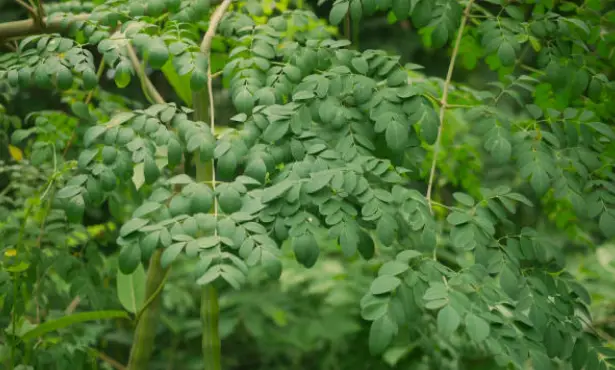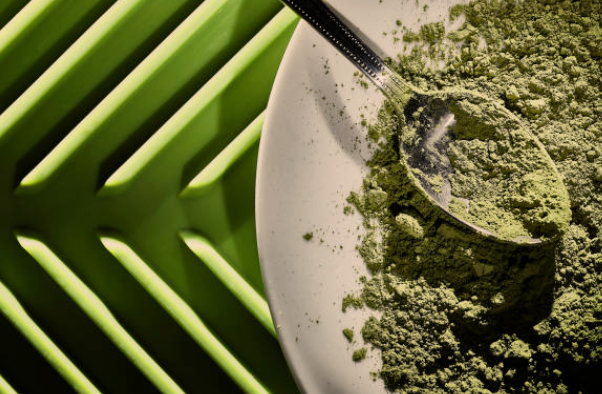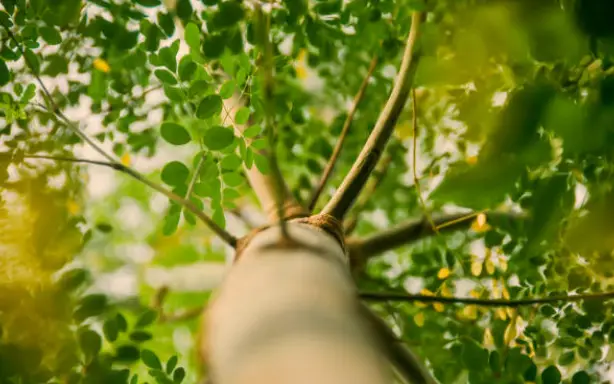Deep in the tropics and sub-tropics around the world grows an incredible tree that has been utilized for generations by the indigenous cultures in its native ranges.
Known scientifically as Moringa oleifera, this slender, drought-resistant tree has been bestowed with the almost revered nickname “tree of life.”
Once you discover the astounding nutritional and medicinal properties packed into the leaves, seedpods, seeds, bark, roots, and flowers of the moringa tree, you’ll quickly understand why this humble plant has earned such high praise.
The moringa is native to the Indian subcontinent, but it has been planted and naturalized across large swaths of Asia, Africa, the Caribbean, and parts of South America. In many developing regions, it plays a crucial role in the daily diet and primary healthcare of local populations.
Every part of the moringa tree is edible and said to offer a host of benefits.

Moringa Tree of Life
Moringa Tree of Life Nutrition in the Leaves
Of all the edible parts of moringa, the leaves are most celebrated for their exceptional nutritional potency. Just one cup of fresh moringa leaves contains:
- Protein: 2g (rivaling the protein content of milk)
- Vitamin B6: 19% of recommended daily intake
- Vitamin C: 12% of recommended daily intake
- Iron: 11% of recommended daily intake
- Vitamin A: 9% of recommended daily intake
- Magnesium: 8% of recommended daily intake
That’s just scratching the surface of the moringa leaf’s dense nutrient profile. These leaves are also rich in antioxidants like quercetin and chlorogenic acid. They provide a bonanza of vitamin E, vitamin K, calcium, potassium, copper, and beneficial plant compounds like isothiocyanates.
In areas plagued by malnutrition, moringa leaves have quite literally saved lives as an important source of nutrients and protein. The leaves can be eaten fresh, cooked, or dried into a powder for long-term storage. Their concentrated nutrition helps fill dietary gaps and provides much-needed vitamins, minerals, and other micronutrients.
Traditional Herbal Remedies

Not surprisingly, indigenous cultures have turned to the moringa tree’s leaves, bark, roots, seeds, and flowers as traditional herbal remedies for centuries. While modern scientific research is still limited, studies do suggest some potential therapeutic uses:
- Anti-inflammatory: Moringa leaf extracts have been shown to reduce inflammation in animals through their isothiocyanate and flavonoid compounds.
- Anti-Diabetic: Multiple studies point to a potential anti-diabetic effect, with moringa helping to reduce blood sugar and insulin resistance.
- Anti-Cancer: Early research hints at possible anti-cancer properties, likely attributed to Moringa’s arsenal of antioxidant compounds.
- Antimicrobial: Extracts from moringa seeds, roots, and leaves demonstrate antimicrobial effects against bacteria, fungi, and viruses.
- Heart Health: Moringa may help reduce risk factors for heart disease like high blood pressure and cholesterol levels.
There are many other exciting areas yet to be explored, such as moringa’s neuroprotective abilities, anti-asthmatic effects, benefits for bone health, wound healing properties, and more. Even the risk of arsenic toxicity from contaminated water sources could potentially be reduced by adding moringa seed extracts.
Versatile in the Kitchen
Beyond its impressive nutritional and medicinal qualities, moringa is also a highly versatile food source incorporated into dishes across its native regions. The nutrient-dense leaves have a flavor reminiscent of matcha green tea—slightly grassy, nutty, and earthy. They can be enjoyed raw in salads and smoothies or cooked into soups, curries, chutneys, and stews.
Young moringa seedpods, called drumsticks, are prepared much like green beans. Their light, distinctive flavor combines well with spices and holds up to frying, sautéing, and curries. Even the seeds themselves can be pressed for a nutty, sweetish oil used for cooking and cosmetics. The roots have a pungent, peppery flavor suited for teas and traditional dishes.
Cultivating a Sustainable Crop
Given the incredible potential that all moringa has to offer, it’s no surprise that this tree is being cultivated deliberately beyond its native territories. Organizations like Trees for Life are making moringa a key part of their nutritional and humanitarian efforts.
As a drought-tolerant, fast-growing tree, moringa is well-suited to many challenging environments that are too arid for common crops. It can grow well in dry soil conditions with as little as a few inches of annual rainfall. Moringa is also a promising candidate for efforts in reforestation, water purification, and producing biofuels from its seedcake remnants.
Perhaps most importantly, moringa trees produce edible leaves, pods, and seeds in as little as 6-8 months after planting, much faster than most trees bear fruit. This renewable harvest helps promote food security in areas where moringa is cultivated.
For communities facing malnutrition, water scarcity, and lack of economic opportunity, the moringa tree offers a sustainable, multipurpose solution. Its every part can be translated into food on the table, traditional plant medicines, income from moringa products for sale, and applied uses like water purification and agricultural fertilizer.
The Future of This Miracle Tree
Though it has been overshadowed by acai, noni, and other widely touted “superfoods,” the humble moringa deserves much greater recognition on the global stage. Its impressive nutritional profile, pharmacological potential, and versatile culinary uses could make it a pivotal tool for improving lives in the developing world. Even in more privileged nations, moringa is rapidly gaining traction in vegetarian and vegan diets, herbal supplements, skin care products, and trendy cafes and food markets.
More benefits of moringa for nutrition and health will undoubtedly become apparent as more research is done on its phytochemistry and possible therapeutic uses. For now, we can celebrate the moringa as a true “tree of life,” delivering optimism and sustenance in the form of its nutrient-dense leaves, seeds, and pods to all cultures it touches across the globe.




